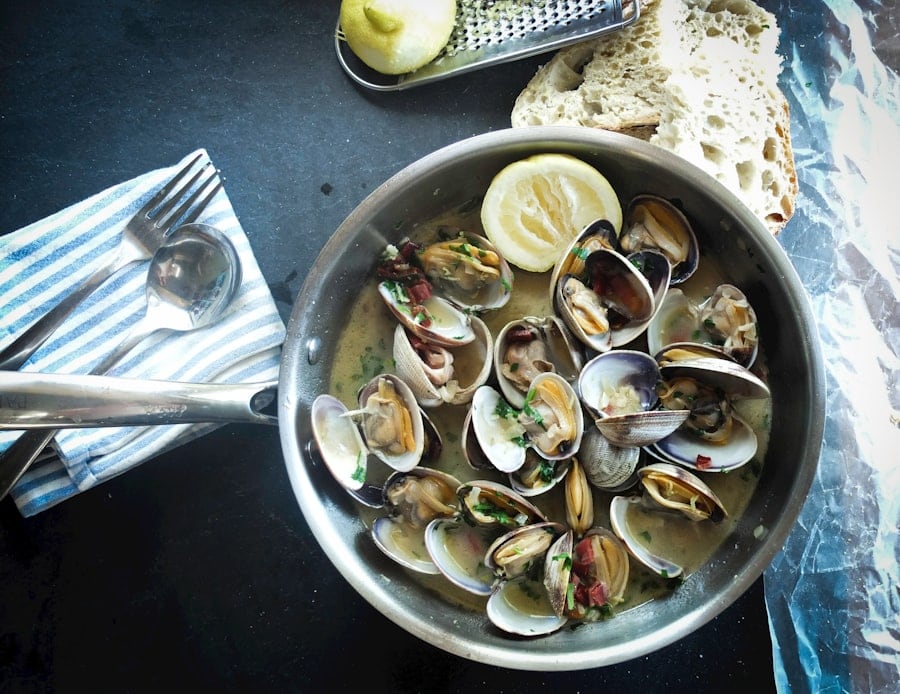Best Gluten-Free Food Brands for People with Celiac

Celiac Disease is a chronic autoimmune disorder that affects the small intestine and is triggered by the consumption of gluten. Gluten is a protein found in wheat, barley, and rye, and it can cause damage to the lining of the small intestine in people with Celiac Disease. This damage can lead to a variety of symptoms and complications, making it crucial for individuals with Celiac Disease to follow a strict gluten-free diet. Choosing gluten-free food brands is essential for those with Celiac Disease to ensure they are consuming safe and healthy products.
Table of Contents
Key Takeaways
- Celiac Disease is an autoimmune disorder that affects the small intestine and requires a strict gluten-free diet.
- Choosing gluten-free food brands is crucial for people with Celiac Disease to avoid gluten contamination.
- Some of the top gluten-free food brands for people with Celiac Disease include Udi’s, Glutino, and Bob’s Red Mill.
- Reading food labels carefully and looking for gluten-free certifications can help ensure that products are safe for people with Celiac Disease.
- Choosing gluten-free food brands can improve symptoms and overall health for people with Celiac Disease.
What is Celiac Disease and how does it affect your diet?
Celiac Disease is an autoimmune disorder in which the body’s immune system mistakenly attacks the lining of the small intestine when gluten is consumed. This immune response causes inflammation and damage to the villi, which are small finger-like projections that line the small intestine and help with nutrient absorption. Over time, this damage can lead to malabsorption of nutrients and various health issues.
When individuals with Celiac Disease consume gluten, it triggers an immune response that can cause a range of symptoms. These symptoms can vary from person to person but commonly include abdominal pain, bloating, diarrhea, constipation, fatigue, weight loss, and nutrient deficiencies. In addition to these immediate symptoms, long-term complications of untreated Celiac Disease can include osteoporosis, infertility, neurological disorders, and an increased risk of certain types of cancer.
Following a strict gluten-free diet is crucial for individuals with Celiac Disease to manage their condition and prevent further damage to their small intestine. This means avoiding all foods and products that contain gluten, including bread, pasta, cereals, baked goods, sauces, dressings, and even some medications and personal care products.
The importance of choosing gluten-free food brands for people with Celiac
For individuals with Celiac Disease, consuming even small amounts of gluten can trigger an immune response and cause damage to the small intestine. Therefore, it is essential to choose gluten-free food brands to ensure that the products they are consuming are safe and free from gluten contamination.
Consuming gluten can have serious health risks for people with Celiac Disease. It can lead to ongoing inflammation and damage to the small intestine, which can result in malabsorption of nutrients and deficiencies in vital vitamins and minerals. This can lead to a range of health issues, including anemia, osteoporosis, and neurological disorders.
Choosing gluten-free food brands provides several benefits for individuals with Celiac Disease. Firstly, it ensures that they are consuming products that are safe and free from gluten contamination. These brands have strict manufacturing processes in place to prevent cross-contamination with gluten-containing ingredients. Secondly, these brands often offer a wide range of gluten-free options, making it easier for individuals with Celiac Disease to find suitable alternatives for their favorite foods. Lastly, choosing gluten-free food brands can provide peace of mind and reduce the stress and anxiety associated with constantly worrying about accidentally consuming gluten.
Top 10 gluten-free food brands for people with Celiac
There are numerous gluten-free food brands available on the market today, but some stand out for their commitment to producing high-quality, safe, and delicious gluten-free products. Here is an overview of the top 10 gluten-free food brands:
1. Udi’s Gluten Free: Udi’s offers a wide range of gluten-free bread, bagels, muffins, pizza crusts, and other baked goods. Their products are known for their taste and texture.
2. Glutino: Glutino specializes in gluten-free snacks and treats such as pretzels, crackers, cookies, and baking mixes. They also offer a variety of bread and pasta options.
3. Bob’s Red Mill: Bob’s Red Mill is known for its extensive line of gluten-free flours, grains, and baking mixes. They also offer gluten-free oats and cereals.
4. Enjoy Life Foods: Enjoy Life Foods is dedicated to producing allergen-friendly products, including gluten-free snacks, cookies, chocolate bars, and baking mixes.
5. Pamela’s Products: Pamela’s Products offers a wide range of gluten-free baking mixes, including pancake mix, cake mix, and bread mix. They also have a line of gluten-free cookies and snacks.
6. Schar: Schar is a European brand that offers a variety of gluten-free bread, pasta, crackers, and snacks. They are known for their high-quality products and wide range of options.
7. Canyon Bakehouse: Canyon Bakehouse specializes in gluten-free bread and baked goods. Their products are made with whole grains and are known for their taste and texture.
8. Annie’s Homegrown: Annie’s Homegrown offers a variety of gluten-free macaroni and cheese, snacks, and baking mixes. They are committed to using organic ingredients whenever possible.
9. Simple Mills: Simple Mills focuses on producing gluten-free baking mixes made with simple, whole food ingredients. They offer options for pancakes, muffins, cookies, and more.
10. King Arthur Flour: King Arthur Flour offers a range of gluten-free flours, baking mixes, and ready-to-eat products such as cookies and brownies. They are known for their high-quality ingredients and delicious taste.
These brands have received positive customer reviews and ratings for their commitment to producing safe and delicious gluten-free products.
How to read food labels to ensure gluten-free products
Reading food labels is essential for individuals with Celiac Disease to ensure that the products they are consuming are truly gluten-free. Here are some tips for reading food labels:
1. Look for the “gluten-free” label: Many food products now carry a “gluten-free” label on their packaging if they meet the FDA’s gluten-free labeling requirements. This label provides assurance that the product contains less than 20 parts per million (ppm) of gluten, which is considered safe for individuals with Celiac Disease.
2. Check for gluten-containing ingredients: Even if a product does not have a “gluten-free” label, it is still possible for it to be gluten-free. Look for ingredients such as wheat, barley, rye, and oats (unless they are specifically labeled as gluten-free). These ingredients are common sources of gluten.
3. Be aware of cross-contamination: Some products may be made in facilities that also process gluten-containing ingredients, which can lead to cross-contamination. Look for statements on the packaging that indicate whether the product may contain traces of gluten or has been produced in a facility that also processes gluten.
4. Use reliable resources: If you are unsure about a particular ingredient or product, consult reliable resources such as Celiac Disease organizations or websites that provide information on safe gluten-free products.
The benefits of choosing gluten-free food brands for people with Celiac

Choosing gluten-free food brands can have several benefits for individuals with Celiac Disease:
1. Improved digestive health: Following a strict gluten-free diet can help to heal the damage to the small intestine caused by Celiac Disease. By choosing gluten-free food brands, individuals can avoid consuming gluten and reduce inflammation in their digestive system, leading to improved digestive health.
2. Reduced risk of complications: Consuming gluten can increase the risk of long-term complications associated with Celiac Disease, such as osteoporosis, infertility, and neurological disorders. By choosing gluten-free food brands, individuals can minimize their exposure to gluten and reduce the risk of these complications.
3. Improved quality of life: Following a strict gluten-free diet can be challenging and require significant lifestyle changes. However, by choosing gluten-free food brands, individuals can have access to a wide range of safe and delicious products that can make their gluten-free journey more enjoyable. This can lead to an improved quality of life and a greater sense of well-being.
Gluten-free alternatives for common foods
For individuals with Celiac Disease, finding suitable gluten-free alternatives for common foods is essential. Here is an overview of some gluten-free alternatives:
1. Bread: There are many gluten-free bread options available, including those made from rice flour, almond flour, or tapioca starch. These breads can be found in most grocery stores or can be made at home using gluten-free bread mixes.
2. Pasta: Gluten-free pasta is widely available and can be made from various ingredients such as rice, corn, quinoa, or lentils. These alternatives offer a similar taste and texture to traditional pasta.
3. Flour: There are numerous gluten-free flours available, including rice flour, almond flour, coconut flour, and chickpea flour. These flours can be used as substitutes in baking and cooking.
4. Snacks: Many snacks can be made gluten-free by choosing brands that offer gluten-free options. For example, potato chips, popcorn, nuts, and dried fruits are naturally gluten-free snacks.
5. Baked goods: Gluten-free baking mixes and flours can be used to make a variety of baked goods such as cookies, cakes, muffins, and pancakes. These alternatives can provide the same taste and texture as traditional baked goods.
When cooking with gluten-free alternatives, it is important to follow recipes specifically designed for gluten-free ingredients to ensure the best results.
Gluten-free snacks and treats for people with Celiac
Finding suitable gluten-free snacks and treats is important for individuals with Celiac Disease to enjoy a varied and satisfying diet. Here are some examples of gluten-free snacks and treats:
1. Fresh fruits and vegetables: These are naturally gluten-free and provide a healthy and refreshing snack option.
2. Rice cakes: Rice cakes are a popular gluten-free snack that can be enjoyed plain or topped with various spreads or toppings.
3. Gluten-free granola bars: Many brands offer gluten-free granola bars made with oats, nuts, and dried fruits. These can be a convenient and tasty snack option.
4. Gluten-free cookies: There are numerous gluten-free cookie options available, including chocolate chip, oatmeal, and peanut butter cookies. These can be found in most grocery stores or made at home using gluten-free baking mixes.
5. Dark chocolate: Dark chocolate is naturally gluten-free and can be enjoyed as a sweet treat. Look for brands that specifically label their products as gluten-free to ensure they are safe to consume.
When looking for gluten-free snacks and treats, it is important to read the labels carefully to ensure they are truly gluten-free and free from cross-contamination.
Gluten-free meal planning for people with Celiac
Meal planning is crucial for individuals with Celiac Disease to ensure they have a well-balanced and varied diet while avoiding gluten. Here are some tips for gluten-free meal planning:
1. Plan your meals in advance: Take some time each week to plan your meals and create a shopping list of gluten-free ingredients and products you will need.
2. Focus on whole foods: Incorporate a variety of fruits, vegetables, lean proteins, and gluten-free grains into your meals. These whole foods are naturally gluten-free and provide essential nutrients.
3. Experiment with new recipes: Look for gluten-free recipes online or in cookbooks to try new dishes and expand your culinary repertoire. There are many resources available that provide delicious and creative gluten-free recipes.
4. Batch cook and freeze meals: Prepare larger quantities of meals and freeze individual portions for later use. This can save time and ensure you always have a gluten-free meal on hand when needed.
5. Be mindful of cross-contamination: When preparing meals, use separate utensils, cutting boards, and cookware to avoid cross-contamination with gluten-containing ingredients.
Here is a sample gluten-free meal plan for a day:
– Breakfast: Gluten-free oatmeal topped with fresh berries and a sprinkle of nuts.
– Snack: Carrot sticks with hummus.
– Lunch: Grilled chicken salad with mixed greens, cherry tomatoes, cucumbers, and a gluten-free dressing.
– Snack: Gluten-free granola bar.
– Dinner: Baked salmon with roasted vegetables (such as broccoli, carrots, and bell peppers) and quinoa.
– Dessert: Fresh fruit salad.
Gluten-free dining out options for people with Celiac
Dining out can be challenging for individuals with Celiac Disease due to the risk of cross-contamination and hidden sources of gluten. However, with some careful planning and communication, it is possible to find gluten-free dining options. Here are some tips:
1. Research restaurants in advance: Look for restaurants that offer gluten-free options or have dedicated gluten-free menus. Many restaurants now cater to individuals with dietary restrictions and provide gluten-free alternatives.
2. Call ahead: Contact the restaurant in advance to inquire about their gluten-free options and their procedures for preventing cross-contamination. This can help you determine if the restaurant is a safe choice for your needs.
3. Communicate your needs: When dining out, inform your server about your dietary restrictions and the importance of avoiding gluten. Ask questions about ingredients and preparation methods to ensure your meal is safe.
4. Stick to simple dishes: Opt for dishes that are naturally gluten-free or can easily be modified to be gluten-free. For example, choose grilled meats or fish with steamed vegetables instead of dishes that may contain hidden sources of gluten.
5. Be cautious of sauces and dressings: Many sauces and dressings contain gluten as a thickening agent. Ask for these to be served on the side or inquire about gluten-free alternatives.
Examples of gluten-free dining options include grilled meats, fish, salads, steamed vegetables, and gluten-free pasta or pizza (if the restaurant offers a dedicated gluten-free kitchen).
Tips for maintaining a gluten-free lifestyle with Celiac Disease
Maintaining a gluten-free lifestyle can be challenging, but with the right strategies and support, it is possible to live a healthy and fulfilling life with Celiac Disease. Here are some tips:
1. Educate yourself: Learn as much as you can about Celiac Disease, gluten-free living, and safe food choices. This knowledge will empower you to make informed decisions and advocate for your health.
2. Join support groups: Connect with others who have Celiac Disease through support groups or online communities. These groups can provide valuable advice, tips, and emotional support.
3. Plan ahead: Always be prepared by having gluten-free snacks and meals on hand. This can help prevent accidental exposure to gluten when you are away from home.
4. Be patient with yourself: Adjusting to a gluten-free lifestyle takes time and practice. Be patient with yourself as you navigate this new way of eating and living.
5. Celebrate your successes: Recognize and celebrate your achievements along the way. Whether it’s finding a new favorite gluten-free product or successfully navigating a social event, acknowledge your progress and give yourself credit for your efforts.
Living with Celiac Disease requires a strict adherence to a gluten -free diet. It is important for individuals with Celiac Disease to carefully read food labels and avoid any products that contain gluten. They should also be cautious when dining out or eating at social events, as cross-contamination can occur. While living with Celiac Disease can be challenging, it is possible to maintain a healthy and fulfilling lifestyle by following a gluten-free diet. With proper education and support, individuals with Celiac Disease can effectively manage their condition and prevent long-term complications.
If you’re looking for more information on maintaining a healthy lifestyle, you might be interested in this article on “How You Can Lose Weight Quickly and Safely.” It provides valuable tips and insights on effective weight loss strategies. Check it out here.
FAQs
What is celiac disease?
Celiac disease is an autoimmune disorder in which the ingestion of gluten leads to damage in the small intestine.
What is gluten?
Gluten is a protein found in wheat, barley, and rye.
What are the symptoms of celiac disease?
Symptoms of celiac disease include abdominal pain, bloating, diarrhea, constipation, fatigue, and weight loss.
What are gluten-free food brands?
Gluten-free food brands are companies that produce food products that do not contain gluten.
What are the best gluten-free food brands?
The best gluten-free food brands for people with celiac disease include Udi’s, Glutino, Enjoy Life Foods, Bob’s Red Mill, and Pamela’s Products.
What types of gluten-free products do these brands offer?
These brands offer a variety of gluten-free products, including bread, pasta, snacks, and baking mixes.
Are gluten-free products more expensive?
Gluten-free products can be more expensive than their gluten-containing counterparts due to the cost of sourcing alternative ingredients and the smaller market for these products.
Are all gluten-free products safe for people with celiac disease?
Not all gluten-free products are safe for people with celiac disease. It is important to read labels carefully and look for products that are certified gluten-free.





